-
 Bitcoin
Bitcoin $106,754.6083
1.33% -
 Ethereum
Ethereum $2,625.8249
3.80% -
 Tether USDt
Tether USDt $1.0001
-0.03% -
 XRP
XRP $2.1891
1.67% -
 BNB
BNB $654.5220
0.66% -
 Solana
Solana $156.9428
7.28% -
 USDC
USDC $0.9998
0.00% -
 Dogecoin
Dogecoin $0.1780
1.14% -
 TRON
TRON $0.2706
-0.16% -
 Cardano
Cardano $0.6470
2.77% -
 Hyperliquid
Hyperliquid $44.6467
10.24% -
 Sui
Sui $3.1128
3.86% -
 Bitcoin Cash
Bitcoin Cash $455.7646
3.00% -
 Chainlink
Chainlink $13.6858
4.08% -
 UNUS SED LEO
UNUS SED LEO $9.2682
0.21% -
 Avalanche
Avalanche $19.7433
3.79% -
 Stellar
Stellar $0.2616
1.64% -
 Toncoin
Toncoin $3.0222
2.19% -
 Shiba Inu
Shiba Inu $0.0...01220
1.49% -
 Hedera
Hedera $0.1580
2.75% -
 Litecoin
Litecoin $87.4964
2.29% -
 Polkadot
Polkadot $3.8958
3.05% -
 Ethena USDe
Ethena USDe $1.0000
-0.04% -
 Monero
Monero $317.2263
0.26% -
 Bitget Token
Bitget Token $4.5985
1.68% -
 Dai
Dai $0.9999
0.00% -
 Pepe
Pepe $0.0...01140
2.44% -
 Uniswap
Uniswap $7.6065
5.29% -
 Pi
Pi $0.6042
-2.00% -
 Aave
Aave $289.6343
6.02%
What should I do if the RSI bottom diverges but the MACD is not confirmed? How to make decisions when multiple indicators conflict?
RSI bottom divergence suggests weakening downtrend momentum, but conflicting MACD signals highlight the need for broader market analysis and additional confirmation tools.
Jun 14, 2025 at 08:29 pm
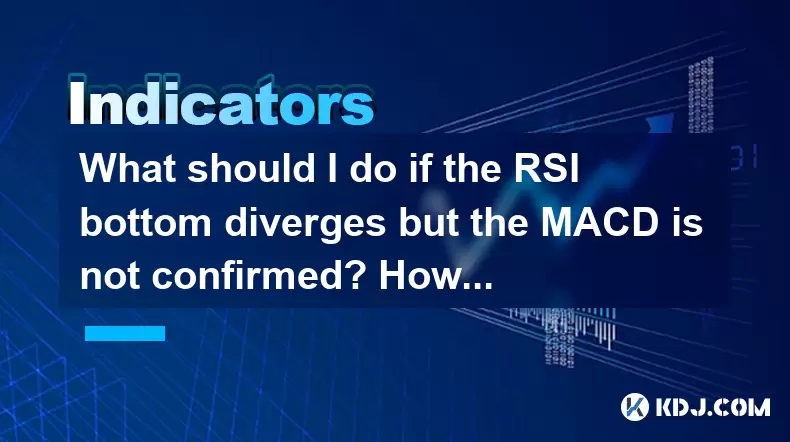
Understanding RSI Bottom Divergence and Its Implications
When the Relative Strength Index (RSI) shows a bottom divergence, it typically signals that a downtrend may be losing momentum. A bottom divergence occurs when the price makes a new low, but the RSI does not confirm this by making a corresponding low — instead, it forms a higher low. This suggests that selling pressure is weakening and that a potential reversal might be on the horizon. However, traders often face confusion when other technical indicators like MACD do not align with this signal.
The key takeaway here is that while RSI divergence can be a powerful indicator of trend exhaustion, it should not be used in isolation. The absence of confirmation from MACD introduces uncertainty, and understanding how to interpret such scenarios becomes crucial for decision-making.
Why MACD Might Not Confirm RSI Divergence
The Moving Average Convergence Divergence (MACD) is a trend-following momentum indicator that shows the relationship between two moving averages of a cryptocurrency's price. When the RSI indicates a bottom divergence but the MACD doesn't confirm, it could mean several things:
- Trend Continuation: The MACD line might still be below the signal line, indicating bearish momentum continues despite RSI signaling a potential reversal.
- Lagging Nature of MACD: Since MACD incorporates moving averages, it tends to lag behind price action more than RSI does. Therefore, it might take longer to reflect changes in momentum.
- Market Conditions: In highly volatile or sideways markets, MACD might not produce clear signals even when RSI diverges.
In such cases, the discrepancy between the two indicators highlights the importance of analyzing broader market conditions and possibly incorporating additional tools into your analysis.
Evaluating Market Context and Trend Strength
Before making any trading decisions based on conflicting indicators, it’s essential to assess the overall market context. Consider the following steps:
- Identify the Dominant Trend: Use long-term charts (e.g., daily or weekly) to determine whether the asset is in an uptrend, downtrend, or consolidation phase. If the dominant trend is bearish, a bullish RSI divergence may only lead to a temporary bounce rather than a full reversal.
- Volume Analysis: Check if volume supports the RSI divergence. An increase in volume during the divergence formation could strengthen the validity of the signal.
- Support and Resistance Levels: Look at nearby support/resistance zones. If the price is approaching a strong support level, the RSI divergence might have more weight in suggesting a bounce.
Understanding the bigger picture helps you avoid false positives and make informed decisions when indicators conflict.
Incorporating Additional Indicators for Confirmation
To resolve the conflict between RSI and MACD, consider integrating other technical tools that offer complementary perspectives:
- Price Action Patterns: Candlestick patterns such as bullish engulfing or hammer formations can provide early signs of a reversal, especially when they coincide with RSI divergence.
- Fibonacci Retracement Levels: These levels help identify potential reversal zones where RSI divergence might carry more significance.
- Stochastic Oscillator: Similar to RSI, the stochastic oscillator measures momentum and can be used to cross-verify divergence signals.
- On-Balance Volume (OBV): OBV can indicate accumulation or distribution activity, which may corroborate or contradict what RSI is signaling.
Using multiple tools increases the probability of identifying genuine reversals and filtering out misleading signals caused by conflicting indicators.
Risk Management Strategies When Indicators Conflict
Even with thorough analysis, there will be instances when no clear consensus emerges from technical indicators. In these situations, implementing sound risk management becomes vital:
- Position Sizing: Reduce trade size when entering positions based on ambiguous signals. Smaller positions limit potential losses if the trade goes against you.
- Stop Loss Placement: Always use stop-loss orders to define your maximum acceptable loss. Place stops below recent swing lows if entering a long position after RSI divergence.
- Profit Targets: Set realistic profit targets based on historical volatility or Fibonacci extensions. Avoid holding onto trades indefinitely hoping for further gains without confirmation.
- Trailing Stops: Once the trade moves in your favor, consider using trailing stops to lock in profits while allowing room for the price to fluctuate.
These strategies help protect capital and maintain discipline when faced with conflicting technical signals.
Frequently Asked Questions
Q: Can I trust RSI divergence more than MACD in crypto trading?
A: Neither indicator should be trusted exclusively. RSI is better at identifying overbought/oversold conditions and potential reversals, while MACD excels in trending environments. Their reliability depends on the context and market structure.
Q: Should I ignore a trade if MACD doesn’t confirm RSI divergence?
A: Not necessarily. You can treat it as a lower-probability setup and adjust your entry strategy accordingly. For example, wait for a candlestick pattern confirmation or look for confluence with support levels before entering.
Q: How often do RSI and MACD align in cryptocurrency markets?
A: Due to high volatility and erratic price movements, alignment between RSI and MACD is relatively rare in crypto. It’s common to see discrepancies, especially during consolidation or choppy market phases.
Q: What timeframes are best for checking RSI and MACD conflicts?
A: It's advisable to analyze both short-term (e.g., 1-hour or 4-hour) and long-term (daily) charts. Conflicts on shorter timeframes may be noise, whereas those on higher timeframes often carry more weight and should be prioritized in decision-making.
Disclaimer:info@kdj.com
The information provided is not trading advice. kdj.com does not assume any responsibility for any investments made based on the information provided in this article. Cryptocurrencies are highly volatile and it is highly recommended that you invest with caution after thorough research!
If you believe that the content used on this website infringes your copyright, please contact us immediately (info@kdj.com) and we will delete it promptly.
- 2025-W Uncirculated American Gold Eagle and Dr. Vera Rubin Quarter Mark New Products
- 2025-06-13 06:25:13
- Ruvi AI (RVU) Leverages Blockchain and Artificial Intelligence to Disrupt Marketing, Entertainment, and Finance
- 2025-06-13 07:05:12
- H100 Group AB Raises 101 Million SEK (Approximately $10.6 Million) to Bolster Bitcoin Reserves
- 2025-06-13 06:25:13
- Galaxy Digital CEO Mike Novogratz Says Bitcoin Will Replace Gold and Go to $1,000,000
- 2025-06-13 06:45:13
- Trust Wallet Token (TWT) Price Drops 5.7% as RWA Integration Plans Ignite Excitement
- 2025-06-13 06:45:13
- Ethereum (ETH) Is in the Second Phase of a Three-Stage Market Cycle
- 2025-06-13 07:25:13
Related knowledge
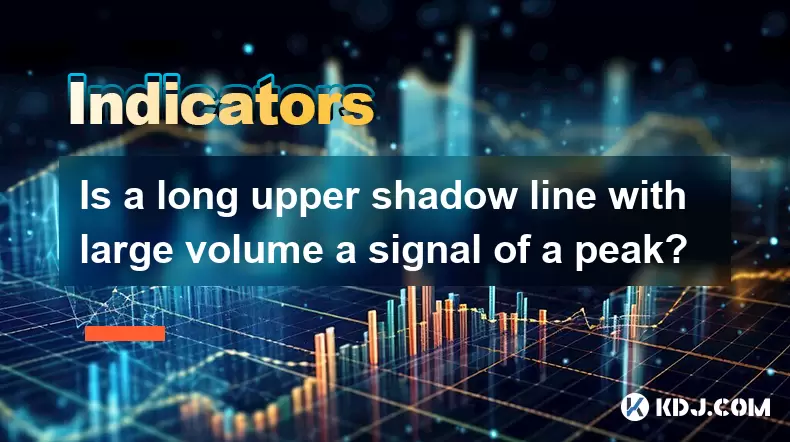
Is a long upper shadow line with large volume a signal of a peak?
Jun 17,2025 at 05:07am
Understanding the Long Upper Shadow LineA long upper shadow line, often referred to as a shooting star or inverted hammer depending on its location in a chart, is a candlestick pattern that indicates potential reversal from an uptrend. This pattern forms when prices rise significantly during the trading period but then fall back to close near the openin...

How to confirm the effectiveness of the average price line support in the time-sharing chart?
Jun 17,2025 at 12:56am
Understanding the Time-Sharing Chart and Its RelevanceIn cryptocurrency trading, time-sharing charts play a crucial role in analyzing short-term price movements. These charts typically display price fluctuations over a specific period, often ranging from minutes to hours. Traders rely on them to make quick decisions based on real-time data. The average ...
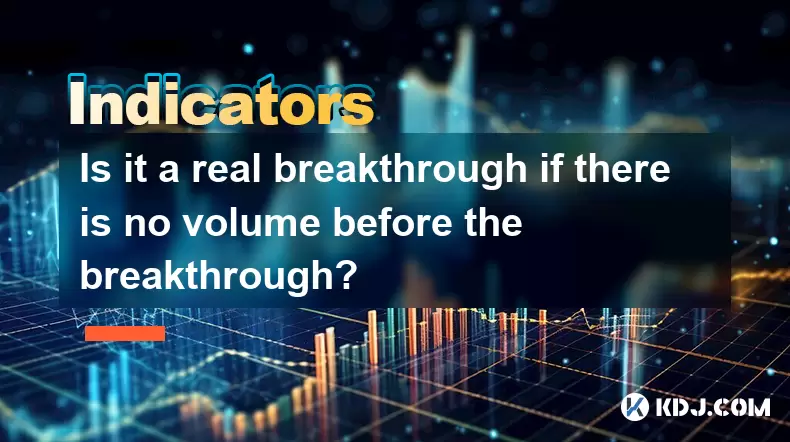
Is it a real breakthrough if there is no volume before the breakthrough?
Jun 17,2025 at 08:03am
Understanding the Concept of a Breakthrough in Cryptocurrency TradingIn cryptocurrency trading, a breakthrough typically refers to a price movement that surpasses a key resistance or support level. Traders often look for such events as potential signals for trend continuation or reversal. However, a crucial factor that determines the strength and reliab...

What does it mean when the momentum indicator breaks above the zero axis?
Jun 17,2025 at 12:43am
Understanding the Momentum IndicatorThe momentum indicator is a technical analysis tool used to measure the speed or velocity of price movements in cryptocurrency markets. It helps traders identify potential trend reversals, overbought or oversold conditions, and confirms existing trends. The indicator typically oscillates around a zero line, with value...
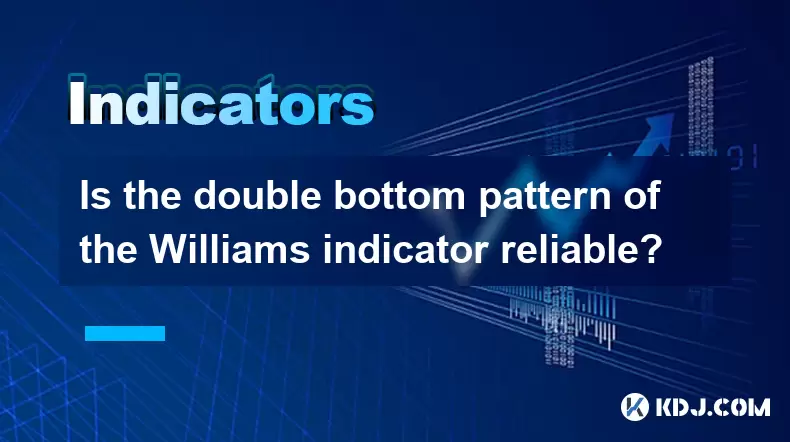
Is the double bottom pattern of the Williams indicator reliable?
Jun 17,2025 at 03:56am
Understanding the Williams Indicator and Its SignificanceThe Williams %R indicator, often referred to as Williams Percent Range, is a momentum oscillator used in technical analysis to identify overbought or oversold conditions in the market. Developed by Larry Williams, this indicator fluctuates between 0 and -100, with readings above -20 indicating ove...
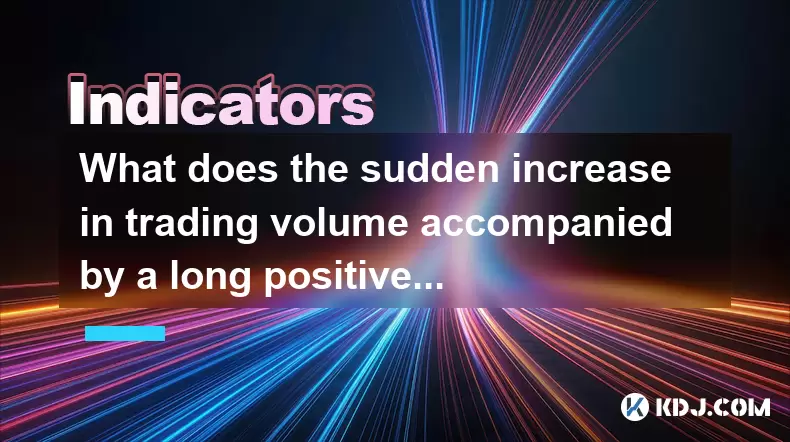
What does the sudden increase in trading volume accompanied by a long positive line mean?
Jun 17,2025 at 06:01am
Understanding the Sudden Surge in Trading VolumeWhen traders observe a sudden increase in trading volume, it typically signals a significant shift in market sentiment. This surge often indicates that more participants are entering or exiting positions, which could be due to news events, macroeconomic data releases, or institutional activity. High tradin...

Is a long upper shadow line with large volume a signal of a peak?
Jun 17,2025 at 05:07am
Understanding the Long Upper Shadow LineA long upper shadow line, often referred to as a shooting star or inverted hammer depending on its location in a chart, is a candlestick pattern that indicates potential reversal from an uptrend. This pattern forms when prices rise significantly during the trading period but then fall back to close near the openin...

How to confirm the effectiveness of the average price line support in the time-sharing chart?
Jun 17,2025 at 12:56am
Understanding the Time-Sharing Chart and Its RelevanceIn cryptocurrency trading, time-sharing charts play a crucial role in analyzing short-term price movements. These charts typically display price fluctuations over a specific period, often ranging from minutes to hours. Traders rely on them to make quick decisions based on real-time data. The average ...

Is it a real breakthrough if there is no volume before the breakthrough?
Jun 17,2025 at 08:03am
Understanding the Concept of a Breakthrough in Cryptocurrency TradingIn cryptocurrency trading, a breakthrough typically refers to a price movement that surpasses a key resistance or support level. Traders often look for such events as potential signals for trend continuation or reversal. However, a crucial factor that determines the strength and reliab...

What does it mean when the momentum indicator breaks above the zero axis?
Jun 17,2025 at 12:43am
Understanding the Momentum IndicatorThe momentum indicator is a technical analysis tool used to measure the speed or velocity of price movements in cryptocurrency markets. It helps traders identify potential trend reversals, overbought or oversold conditions, and confirms existing trends. The indicator typically oscillates around a zero line, with value...

Is the double bottom pattern of the Williams indicator reliable?
Jun 17,2025 at 03:56am
Understanding the Williams Indicator and Its SignificanceThe Williams %R indicator, often referred to as Williams Percent Range, is a momentum oscillator used in technical analysis to identify overbought or oversold conditions in the market. Developed by Larry Williams, this indicator fluctuates between 0 and -100, with readings above -20 indicating ove...

What does the sudden increase in trading volume accompanied by a long positive line mean?
Jun 17,2025 at 06:01am
Understanding the Sudden Surge in Trading VolumeWhen traders observe a sudden increase in trading volume, it typically signals a significant shift in market sentiment. This surge often indicates that more participants are entering or exiting positions, which could be due to news events, macroeconomic data releases, or institutional activity. High tradin...
See all articles

























































































